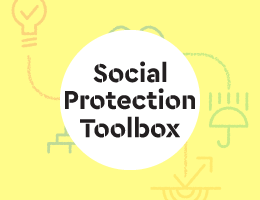Fiji, an archipelago country in the South Pacific home to a population of 883,000, has introduced an e-payments system for its social assistance programmes as of 2011. The new system, which replaced paper voucher-based payments distributed via Department of Social Welfare (DSW) Offices, operates via savings-linked, flexible and no-fee bank accounts opened for approximately 22,000 welfare recipients across all programmes.
The drive for such a radical shift came from Government as early as 2009, working alongside the Pacific Financial Inclusion Programme (PFIP). An Activity Based Costing was performed, stressing significant inefficiencies (in terms of time and cost) of the voucher-based system. This was accompanied by a Study on Perceptions and Attitudes of beneficiaries towards electronic payment systems. Based on consolidated evidence, the Minister of Social Welfare recommended an overhaul to the previous system, obtaining approval from the Reserve Bank of Fiji and Cabinet. The Westpac Banking Corporation of Australia was subsequently identified as an implementing partner, responsible for distributing social welfare benefits across Fiji through its network of branches, Automatic Teller Machines (ATMs) and Point of Sale (POS) POS devices as of January 2011. The overall strategy was aligned with the policy vision within Fiji’s ‘Peoples Charter for Change, Peace and Progress’: (i) reducing poverty (via financial inclusion) and (ii) enhancing public sector efficiency and service delivery (reducing overall costs of delivery, as well as leakage and fraud).
The impact of the new system has not been formally evaluated, but operational reports stress important results to date. First of all, 94 percent of those receiving payments were previously unbanked. Recipients now have access to a basic transaction account including access to an ATM debit card. There are no maintenance fees on the account, no minimum balance and 10 free monthly transactions. Second, common issues with the old system – time lags between payments, distant travel to reach DSW offices, long queues – have been fully addressed. Third, the payment-related workload for DSW staff has been considerably reduced (by an estimated 4 months a year, equated to a saving of $158,000 in direct costs), opening up space for other relevant tasks (e.g. individual case work). Fourth, the transition reportedly removed some 2,000 deceased, duplicate and fraudulent clients from the system, while also enabling the strengthening of social welfare information systems and linkage with other government databases (e.g. from the Births, Deaths and Marriages department and the Fiji National Provident Fund). Fifth, the e-payments platform has since been leveraged for other forms of assistance – including during the humanitarian response to Typhoon Winston via top-up payments to existing beneficiaries (‘vertical expansion’).
Of course, there were many challenges during the transition process from manual to electronic Government to Person (G2P) payments. These were tackled on an iterative basis, and included: a) the need for continuous financial education for recipients, to address barriers to access; b) the initial lack of DSW coordinating authority and capacity; c) the need to negotiate inter-sectoral agreements for a whole-of-government strategy. As an example on this last point, DSW worked with other government actors to ensure adequate financial infrastructure across the country, requiring that all commercial banks have interoperable POS devices in place to allow withdrawal of funds from a POS machine in any store. Moreover, it negotiated changes to routine Know Your Customer requirements, making DSW-issued ID cards and/or referee letters from village chiefs, teachers, etc. acceptable forms of ID. By enabling access to financial services to the previously unbanked, reducing transaction costs and time, decreasing duplication and fraud, facilitating social security payments to and from government- also in humanitarian emergencies, the electronic payment system has helped to expand the benefits of financial inclusion and social security to previously unbanked populations.
Further reading links
- (2012) G2P: Expanding Financial Inclusion in the Pacific Report http://www.pfip.org/our-work/topic-areas/g2pp2g/g2p-expanding-financial-inclusion-in-the-pacific-report/
- FIP Government-to-Person (G2P) Payments in Fiji http://www.pfip.org/wp-content/uploads/2016/08/Government-to-Person-G2P-Payments.pdf
- CGAP Fiji’s Family Assistance Program https://www.cgap.org/blog/fijis-family-assistance-program
- CGAP G2P Starts with Government to the Poorest in Fiji https://www.cgap.org/blog/g2p-starts-government-poorest-fiji
- Mansur et al (2018) Cash transfers for disaster response: lessons from Tropical Cyclone Winston https://reliefweb.int/sites/reliefweb.int/files/resources/SSRN-id3143459.pdf
